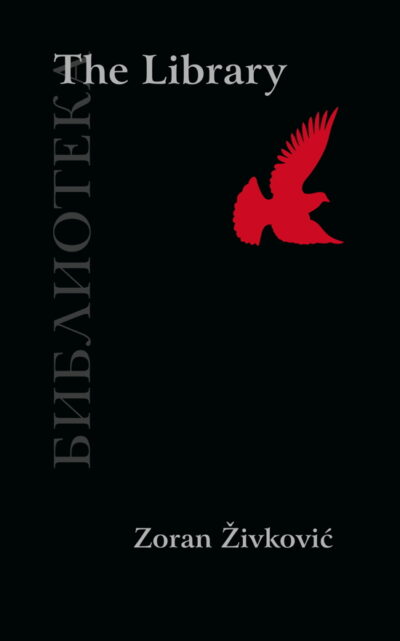Logging onto Kurodahan.com, you’ll find a most disheartening banner: “Kurodahan Press Has Closed.” Compounding the sadness, a subheading reads “All books are now out of print.” Further info can be found under the “News” tab, whose final post, written by Kurodahan’s founder Edward Lipsett, details the fact that Kurodahan shut down at the end of March, 2025, and that “It’s been a very enjoyable and rewarding (spiritually, at least) experience, and I only wish I could have done it more and better.”
Kurodahan was a micro-niche publisher located in Kumamoto, Japan. Founded in 2002, it specialized in Japanese literature in English translation, with a focus on horror and science fiction. Given that such writing is hard to come by in the English speaking world (Japanese being notoriously difficult to translate), I say Kurodahan provided a much-needed service for genre fans.
Micro-niche publishing, for the record, was around prior to the millennium, but it exploded after the year 2000, with the expansion of e-commerce and print-on-demand services. Micro-niche publishers birthed in the early aughts included Black Coat Press (est. 2003), which specializes in English translations of French genre literature; Ramble House (est. 2000), devoted to bizarre fiction from years past; and Eibonvale (est. 2004), which “sits squarely between genres where the unpredictable and the unclassifiable are the norm.” Those outfits, of course, are still extant, while Kurodahan is not.
It was Kurodahan Press that spearheaded the Edogawa Rampo craze currently overtaking the publishing world (with Kurodahan eschewing the “Ranpo” spelling so many translators now use), and which introduced the western world to Lovecraftian fiction from the land of the rising sun. There was also the annual Kurodahan Press Translation Prize for “translation excellence of a selected Japanese short story into English” that ran from 2008 to 2020. Furthermore, Lipsett briefly eschewed Japanese fiction in 2010 to publish five books by Serbia’s Zoran Zivkovic.
As with any small press, Kurodahan had its up and downs. Its planned 2013 publication of Rampo’s STRANGE TALE OF PANORAMA ISLAND was cancelled after the University of Hawaii published its own translation in 2012 (which was in turn outdone by Last Gasp’s 2013 publication of Suehiro Maruo’s stunning graphic novel version of Rampo’s tale). Kurodahan’s overall fortunes were indicated by Lipsett’s above-quoted “spiritually, at least” qualifier in his remark about the rewards of his job (with financial apparently not included among them).
What can’t be denied is that Kurodahan put out quite a few worthwhile, and in some cases exceptional, books. Foremost among Kurodahan’s releases are the Zivkovic books, as well as the four volume LAIRS OF THE HIDDEN GODS anthology series that showcased Cthulhu mythos-inspired Japanese fiction. The dedication and enthusiasm LAIRS’ writers evinced toward the particulars of Lovecraft’s mythology were undeniable, despite some perverse twists that wouldn’t have pleased the famously puritanical Lovecraft. Even for those who (like me) have grown tired of the mythos, LAIRS OF THE HIDDEN GODS provided an altogether unique and culturally specific, but still readable and user-friendly, take on familiar subject matter.
More Cthulhoid fun was provided by the novel THE QUEEN OF K’N-YAN by Asamatsu Ken, who edited LAIRS OF THE HIDDEN GODS. In K’N-YAN Ken created a strong and cohesive narrative out of seemingly disparate elements—hallucinations, historical reverie and pulpy excess—and did so in a manner that’s crisp, thought-provoking and, most of all, fun.
I’m also quite partial to Kurodahan’s three volume KAIKI: UNCANNY TALES FROM JAPAN anthologies. Collected are supernatural tales set during Japan’s Edo period of 1603-1868, with an author roster that includes Kyogoku Natsuhiko, Koda Rohan, Miyabe Miyuki and Lafcadio Hearn, whose 1902 tale “In a Cup of Tea” (from Hearn’s immortal collection KWAIDAN) is included.
Other must-read Kurodahan Press offerings included the Edogawa Rampo titles THE BLACK LIZARD AND BEAST IN THE SHADOWS, which presented two terrifically pulpy Rampo novelettes in a single book, and THE EDOGAWA RAMPO READER, a selection of Rampo penned fiction and reportage. SPECULATIVE JAPAN offered three volumes’ worth of carefully selected Japanese science fiction and fantasy stories, while ON THE BRINK provided a gripping nonfiction account of the 2011 Tōhoku earthquake and the ensuing struggle to stabilize the Fukushima Daiichi Nuclear Power Plant.
I have no doubt Kurodahan would have put out many more worthwhile books had it kept going. Right now, I’d strongly urge interested parties to grab all the extant Kurodahan Press books (many of which can still be purchased on Amazon.com) they can, as those books are doubtless going to become quite scarce.



